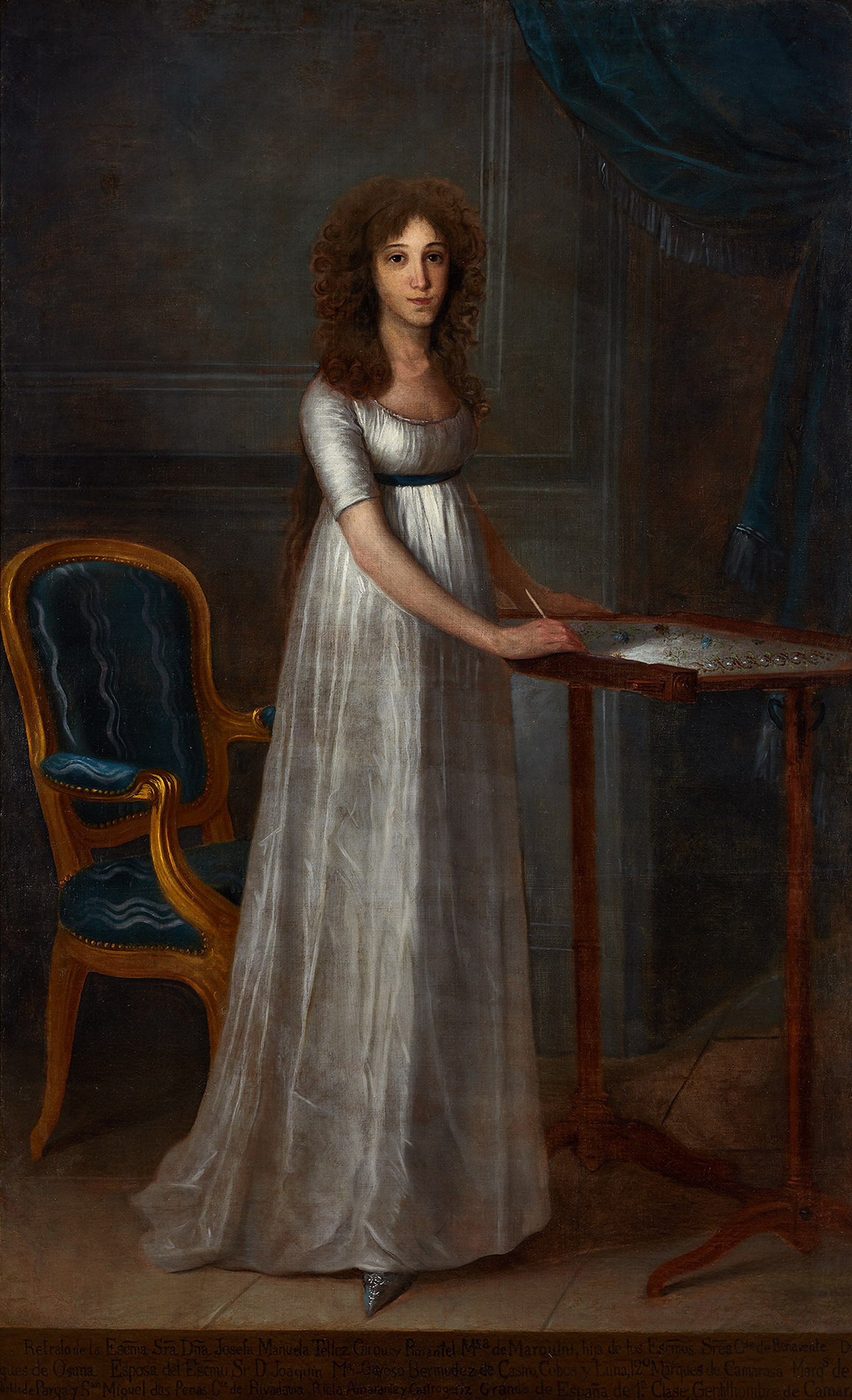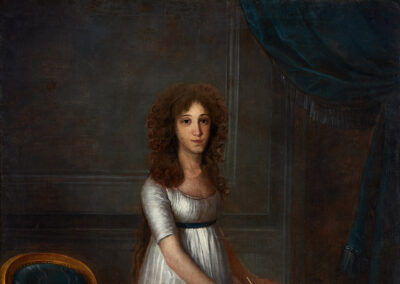As the long caption below indicates, the sitter is Josefa Manuela Téllez Girón (1783-1817), first-born daughter of the IX Duke and Duchess of Osuna, Marquise of Marguini, by transfer from her mother, and, by her subsequent marriage, XI Marquise of Camarasa.
As Virginia Albarrán (2017) points out, the Countess-Duchess of Benavente - by marriage Duchess of Osuna - wished to perpetuate the life stages of her children and grandchildren in various portraits, creating an extensive family gallery. Her two favourite painters were Francisco de Goya and Agustín Esteve, the latter an artist who, as well as being the family's drawing teacher, was the first portraitist of the House, as he had already painted the Countess-Duchess (Duke of Infantado collection) in 1778, ten years before the artist from Fuendetodos painted his celebrated painting of The Dukes of Osuna and their Children (Museo del Prado P00739), in which the portrait of the Countess is already shown on her father's arm at the age of about four.
In 1797 Esteve portrayed the youngest daughter of the Duke and Duchess of Osuna, Manuela Isidra (Museo del Prado P008256) - the future Duchess of Abrantes - a painting that must have pleased the artist greatly, as he was immediately commissioned to portray the other four children in January 1798, Although the present canvas belongs to this series and, having superimposed on it another very long painting of his parentage and death, has lost the original inscription of his age, expressed in years and months, which those of his siblings have, there is no doubt that it was painted in that year.
This portrait was conceived to form a pair with that of his sister Joaquina (Museo del Prado P02581), as they are identical in conception and composition, the sitters are looking at each other and in both the painter uses a very limited colour palette with a predominance of various shades of white. The Marquise de Marguini is depicted in front of an embroidery frame, dressed in fin-de-siècle fashion, wearing a shirt "...".robe en chemiseThe neoclassical-inspired "muslin" is made of white, light and expensive muslin that used to be imported from India.




